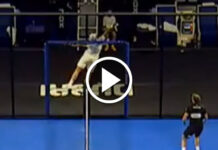Choosing the right padel racket can significantly impact your performance and enjoyment of the game. Here are some key factors to consider when selecting a padel racket:
1. Shape
Padel rackets come in three main shapes: round, diamond, and teardrop. Each shape offers different benefits:
Round: Ideal for beginners, round rackets provide better control and a larger sweet spot, making it easier to hit the ball accurately.
Diamond: Suited for advanced players, diamond-shaped rackets offer more power but have a smaller sweet spot, requiring more precision.
Teardrop: A balance between power and control, teardrop-shaped rackets are versatile and suitable for intermediate players.
2. Weight
The weight of the racket affects your swing and maneuverability:
Lightweight (350-370g): Easier to handle and maneuver, making them ideal for beginners and players who prioritize control.
Medium weight (370-385g): Offers a balance between power and control, suitable for most players.
Heavyweight (385-400g): Provides more power but can be harder to control, recommended for advanced players with strong arms.
3. Balance
The balance of the racket influences its feel and performance:
Head-heavy: Provides more power but can be harder to control. Suitable for aggressive players who like to hit powerful shots.
Even balance: Offers a good mix of power and control, making it versatile for different playing styles.
Head-light: Easier to maneuver and control, ideal for defensive players who focus on precision and quick reactions.
4. Material
Padel rackets are made from various materials, each affecting the racket’s performance and durability:
Fiberglass: Offers good flexibility and control, making it suitable for beginners.
Carbon fiber: Provides more power and durability, ideal for intermediate and advanced players.
Graphene: A high-end material that offers excellent strength and lightness, perfect for professional players.
5. Surface
The surface of the racket can be smooth or rough:
Smooth: Provides a consistent hit and is easier to control, suitable for beginners.
Rough: Offers more spin and control over the ball, preferred by advanced players who want to add spin to their shots.
6. Grip
The grip size and comfort are crucial for maintaining control and preventing injuries:
Grip size: Choose a grip size that feels comfortable in your hand. A grip that is too small or too large can affect your control and cause strain.
Overgrips: Adding overgrips can help customize the grip size and provide extra cushioning for comfort.
7. Playing Style
Your playing style should influence your choice of racket:
Defensive players: Should opt for a racket that offers more control and maneuverability.
Aggressive players: Should choose a racket that provides more power and stability.
8. Skill Level
Consider your skill level when choosing a racket:
Beginners: Should look for rackets that offer more control and a larger sweet spot.
Intermediate players: Should choose rackets that provide a balance between power and control.
Advanced players: Can opt for rackets that offer more power and precision.
9. Budget
Finally, consider your budget. While high-end rackets offer advanced features and materials, there are many affordable options that provide excellent performance for beginners and intermediate players.
By considering these factors, you can find a padel racket that suits your playing style, skill level, and preferences, helping you enjoy the game to the fullest. Happy playing!

































